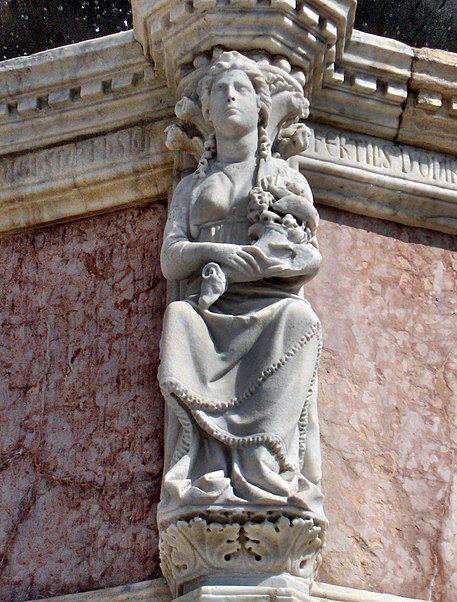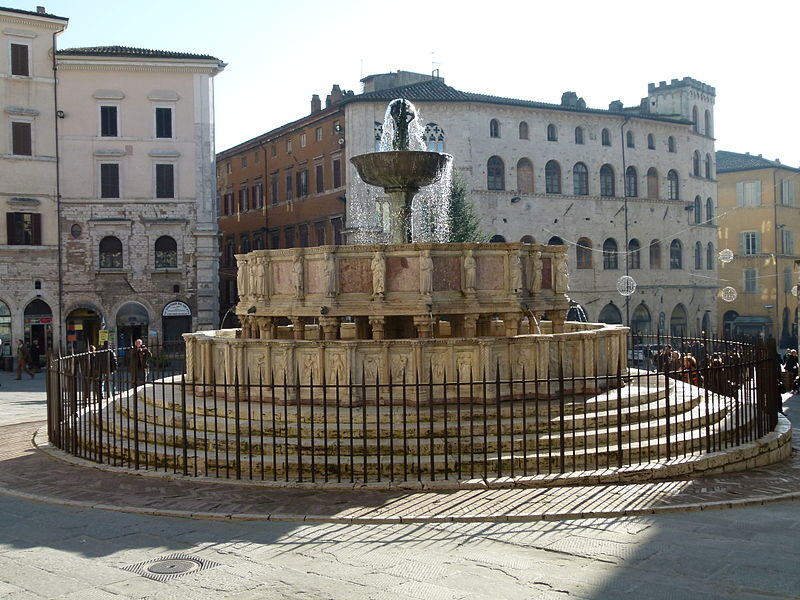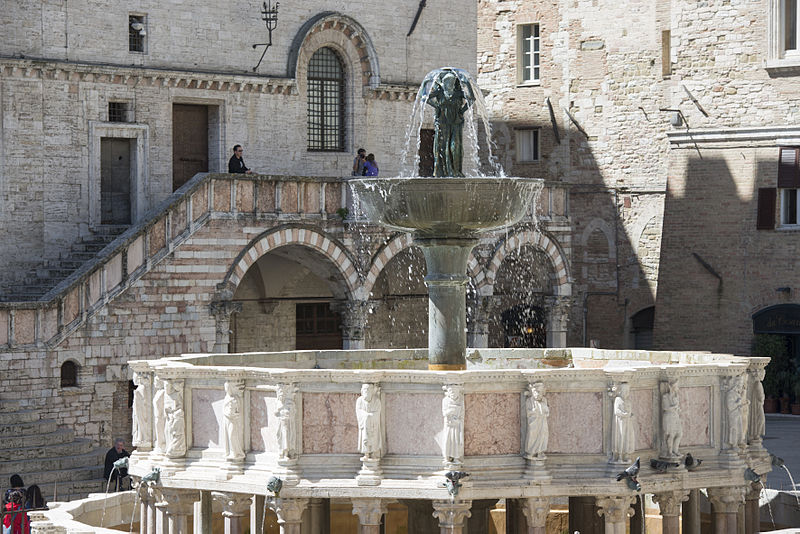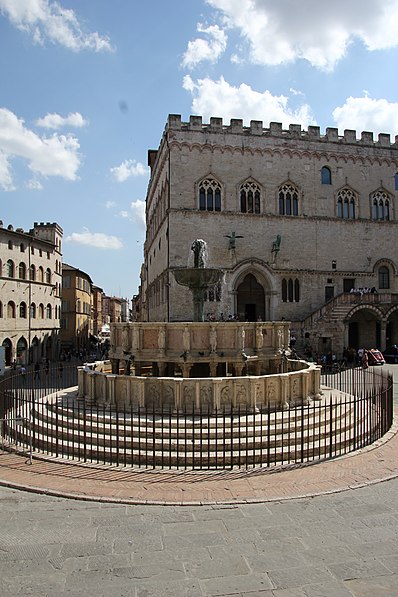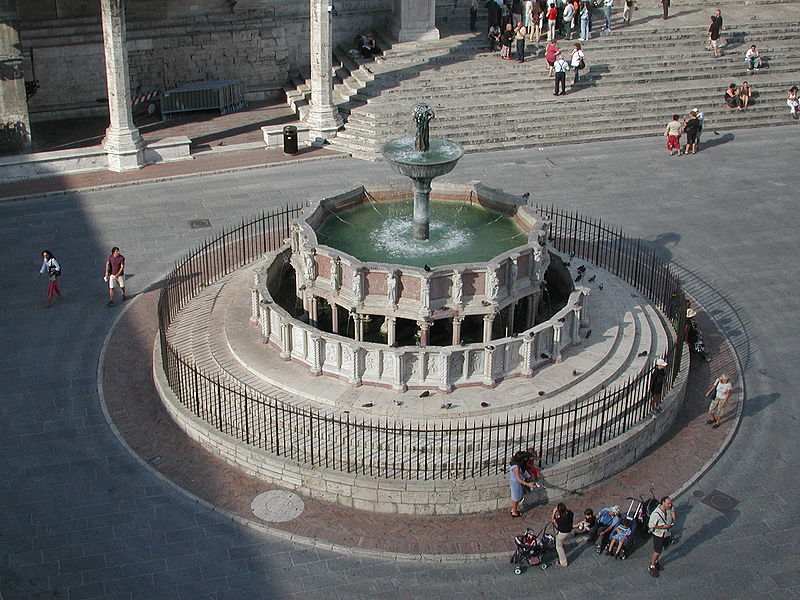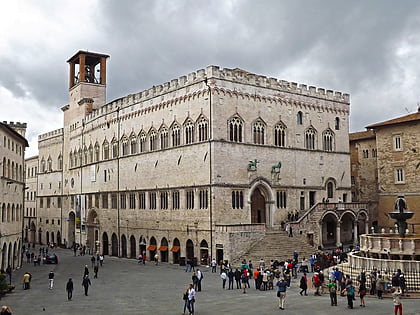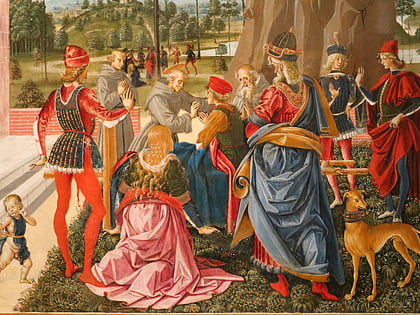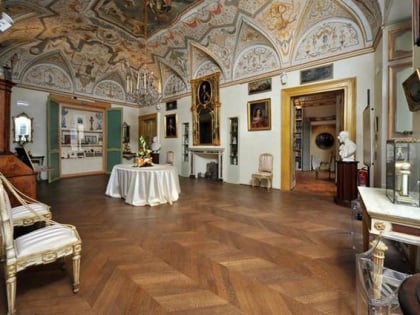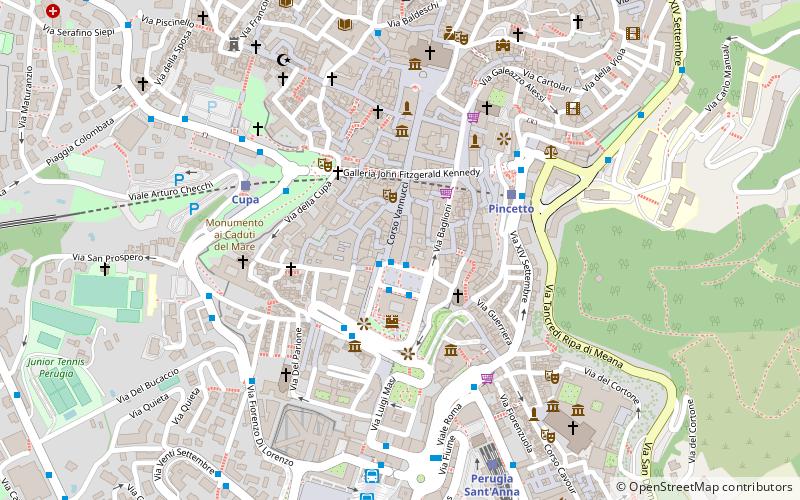Fontana Maggiore, Perugia
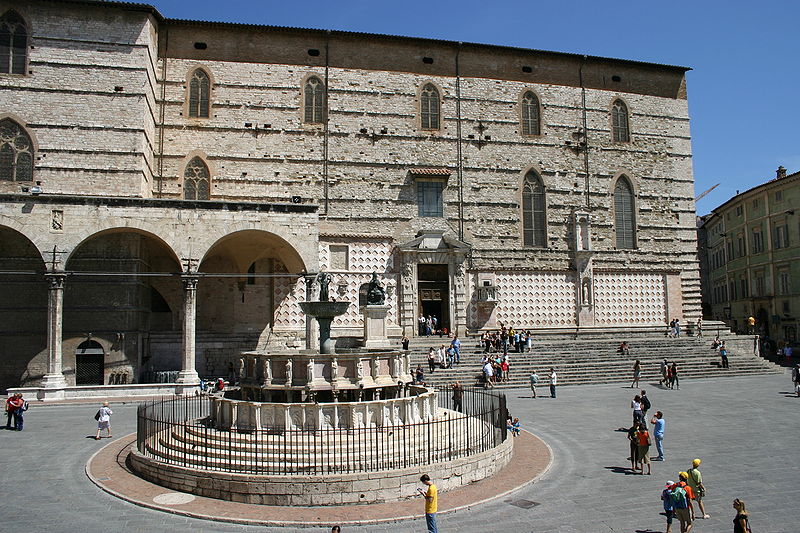
Facts and practical information
The Fontana Maggiore is a pivotal historical landmark nestled in the heart of Perugia, Italy. Constructed between 1275 and 1278, this medieval fountain is not merely a source of water but a monument rich with artistic and cultural significance. It stands as a testament to the ingenuity of its creators, the sculptor Nicola Pisano and his son Giovanni, who adorned the fountain with intricately carved panels that depict scenes from the Old Testament, the founding of Rome, and the agricultural calendar, reflecting the blend of religious and everyday life in the Middle Ages.
Situated in Piazza IV Novembre, the Fontana Maggiore serves as the focal point of the city, drawing both locals and tourists to its captivating bas-reliefs and shimmering waters. This masterpiece of Perugian art is also a functional piece of infrastructure, marking the terminal point of a Roman aqueduct that brought water to the city.
The fountain consists of two polygonal basins stacked on top of each other, surmounted by a bronze basin at the top, showcasing the exceptional craftsmanship of the Pisano family. The lower basin is adorned with 24 panels, while the upper basin features 25 smaller panels, each narrating a different story or symbolizing a specific astrological sign, reflecting the universal knowledge of the time.
Fontana Maggiore – popular in the area (distance from the attraction)
Nearby attractions include: Palazzo dei Priori, Galleria Nazionale dell'Umbria, Palazzo della Provincia e della Prefettura, Pozzo Etrusco.
Frequently Asked Questions (FAQ)
Which popular attractions are close to Fontana Maggiore?
How to get to Fontana Maggiore by public transport?
Bus
- Piazza Cavallotti • Lines: C (2 min walk)
- P.za Fortebraccio • Lines: C, C2, F (5 min walk)
Train
- Pincetto (5 min walk)
- Cupa (6 min walk)


